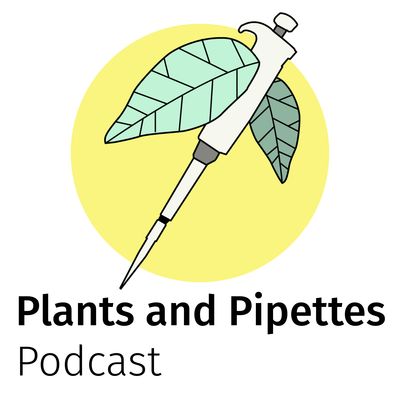episode 79: Positive Adjectives! – Tomato transpiration, wild cotton, super-plants?
Welcome to another week of doomsday escapism. We bring you a cool story about transpiring tomatoes, wonder about wild cotton and are suspicious about road-side super-plants. And we ask: What is your favourite idiom that translates poorly into English?
Transpiration from Tomato Fruit Occurs Primarily via Trichome-Associated Transcuticular Polar Pores, Eric A. Fich, Josef Fisher, Dani Zamir, Jocelyn K.C. Rose, Plant Physiology Dec 2020, 184 (4) 1840-1852; DOI: 10.1104/pp.20.01105
Links- Milestones in Genomic Sequencing
- A wealth of discovery built on the Human Genome Project — by the numbers
- Modified genes can distort wild cotton’s interactions with insects; Study in Scientific Reports
- Gossypium hirsutum
- Global Plant Science Event Calendar
- The Weeds in Your Bird Seed | awkward botany
- Polina Volkova is doing research on radiation effects on plants
- Experts identify ‘super-plant’ that absorbs roadside air pollution
- It is Fishing Cat February my dudes
- Gone fishing: the fight to save one of the world’s most elusive wild cats
- And of course February is Black History Month.
Check out the new episode of the Plant Book Club!
All views are our own. If you want to comment or correct anything we said, leave a comment under this post or reach out to us via twitter, facebook or instagram.
Our opening and closing music is Caravana by Phillip Gross
Until next time!
Support Us!
Behind the scenes of Plants and Pipettes [These are the notes Joram took based on the paper.]- Tomatoes. We can’t live without them
- Very good
- They do dry out though eventually which is not so good
- When plants dry out (transpire), they do that with their stomata
- BUT: TOMATOES ARE ASTOMATOUS
- The fruits don’t transpire through stomata
- HOW I ask HOW?!
- Well actually there are other ways to transpire
- 9 out 10 transpiration experts agree that the cuticular (wax layer) blocks a lot of transpiration, but not all of it
- BUT HOW do they transpire when there is a layer of wax that is impermeable to water
- Good question
- Nobody knows
- UNTIL NOW
- It could be through the cuticular. The wax layer could be differently THICK or made from different waxes
- or it could have spots where hydrophilic sugars let water through
- who knows
- guess what, we will know in like ten minutes
- So the researchers first needed things to compare. Without compare no information share
- They screened almost 400 (398) tomato varieties from three species in the field for their water retention abilities
- Some transpire a lot, others less so
- They picked exemples from both extremes: four low-water-loss lines, and five high-water-loss lines
- Now they could compare them and try to find what one group had that made it better than the other group
- They measured many things
- Was it cuticular thickness –> NO correlation with water loss
- What about cuticle permeance -> NAH
- Or cuticle composition? Guess what (no)
- Nothing correlated with the water loss behaviour
- so what could it be?
- THEY NOTICED SOMETIN
- to control for damage of the cuticle, they would use a water soluble staining solution. If the cuticle was damaged, it would show up as blue spots
- Oh my gosh there were so many blue spots but they were tiny
- Upon closer inspection it turned out to be small holes
- from trichomes!
- Trichomes are the pointy needle bits on tomato stems and fruit
- When the trichome breaks, it leaves a small spot that is water soluble
- and guess what: the tomatoes that easily lost water had more trichome holes than the ones that kept their water
- The whole story gives a good indication about tomato fruit transpiration and sets a goal for breeders: trichome number on fruit might best be kept low to avoid transpiration during transport
- Because interestingly: wild relatives of tomatoes have less trichomes on their fruit, but the more we domesticated them, the more trichomes they would accumulate as a biproduct of breeding
